T&L Phoenix Leadership SummitCurriculum & Tech: Can This Marriage Be Saved?
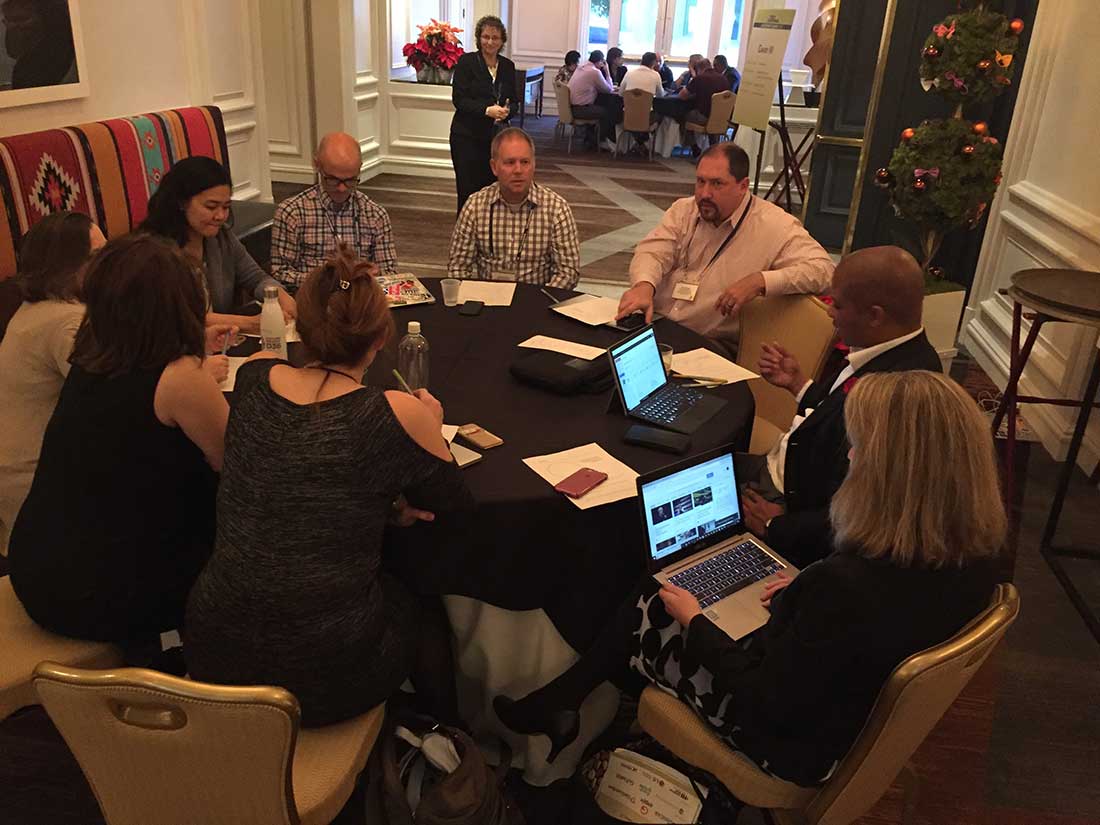
By Lisa Nielsen
The theme of Tech & Learning’s December leadership event was “Curriculum & Tech: Can This Marriage Be Saved?” Over two days in Phoenix, Arizona, school leaders from around the country engaged in working groups, a panel, and a school visit with a focus on how to help both sides better understand each other’s challenges, improve collaboration, and support their district’s instructional goals through powerful uses of technology.
School Visit: Phoenix Coding Academy
To kick off the conference, attendees visited the Phoenix Coding Academy (phxhs.k12.az.us/coding), the state’s only public high school that integrates technology into each content area. Principal Seth Beute gave attendees an overview of the school, highlighting the importance of partnering with businesses to ensure students are prepared to enter a job market in which technology skills are a basic requirement. This is critically important because employment opportunities in technology-related careers are growing at a faster rate than other industries.
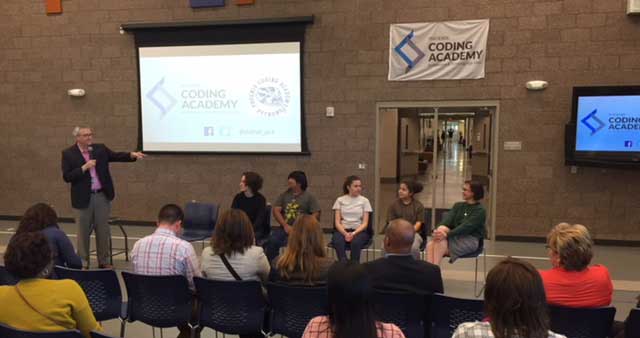
Some of the ways the school partners with businesses include providing students with:
- Job-shadowing opportunities
- Mentorships
- Internships (for seniors)
- Guest instructors
- Field trips
- The chance to serve on advisory councils and provide input on the curriculum and ways it can be aligned to the skills needed to work in technology fields.
These businesses realize the need to develop more talent from underrepresented groups, and Phoenix Coding Academy addresses that need. Summit attendees heard from students during a school tour and panel. During the panel, students suggested three strategies for targeting groups that lack representation in STEM fields:
- Go where these populations are and show them what is available.
- Show female students that tech careers are within reach for them.
- Connect students to a learning network of others who look like them and who are successful in this industry.
During the school tour, Summit attendees saw the school’s student-centered academic approach. This starts with ensuring that everyone in the school is familiar with the strengths of the students and staff. The school does this by posting the students’ strength profiles prominently using a tool called Indigo (similar to Thrively). These are constant reminders of the collective talent and intelligence that surround and support students and staff. Educators and students can use these profiles to customize their schoolwork to ensure that what they do best matches the needs indicated in their learning profiles.
Tools and ideas to transform education. Sign up below.
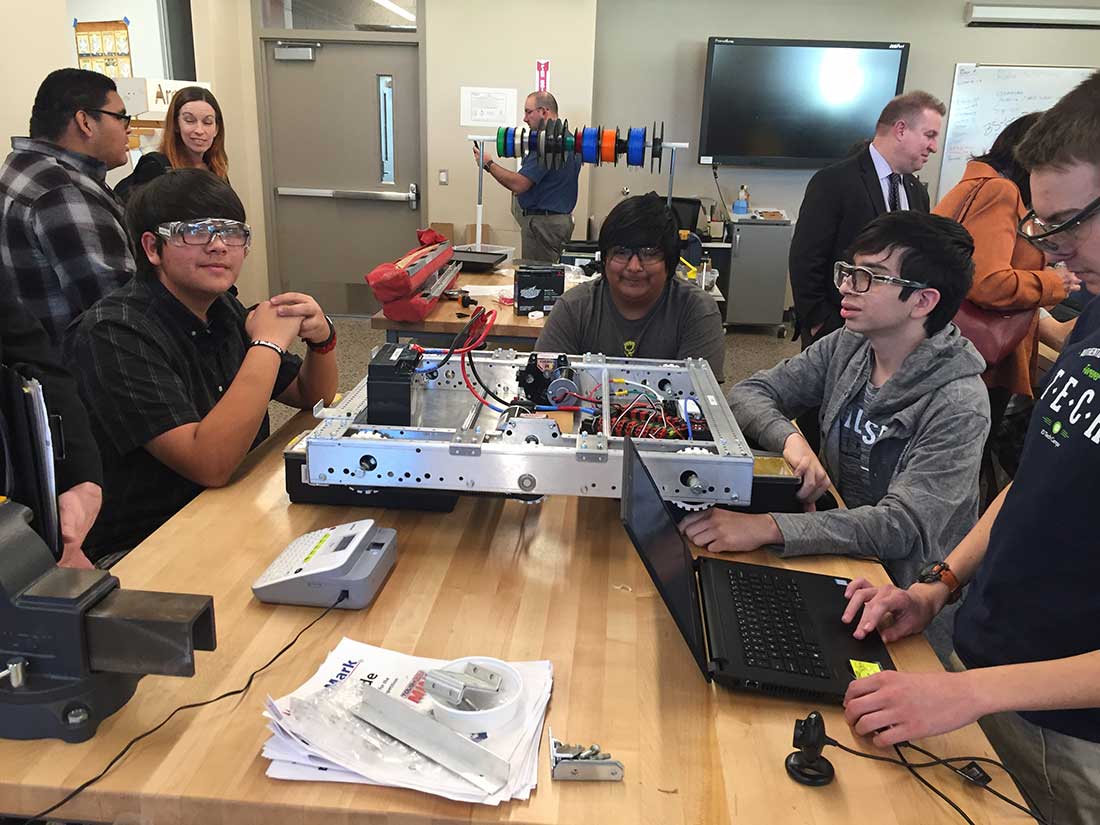
Students explained the value of attending a school that helps them get an early start on the career they’ll pursue after high school or college. They said the school places them far ahead of the game because they don’t have to waste time taking classes that don’t align to their future goals.
Visit http://tinyurl.com/PCAVideoRecap for a video recap of the event.
Panel: Curriculum & Tech: Can This Marriage Be Saved?
Day two kicked off with a panel discussion moderated by Sheryl Abshire, chief technology officer of Calcasieu Parish (LA) Public Schools. The panel included administrators from several districts sharing stories about how technology and curriculum leaders are working together to ensure that technology purchases and uses support their instructional goals and educational vision.
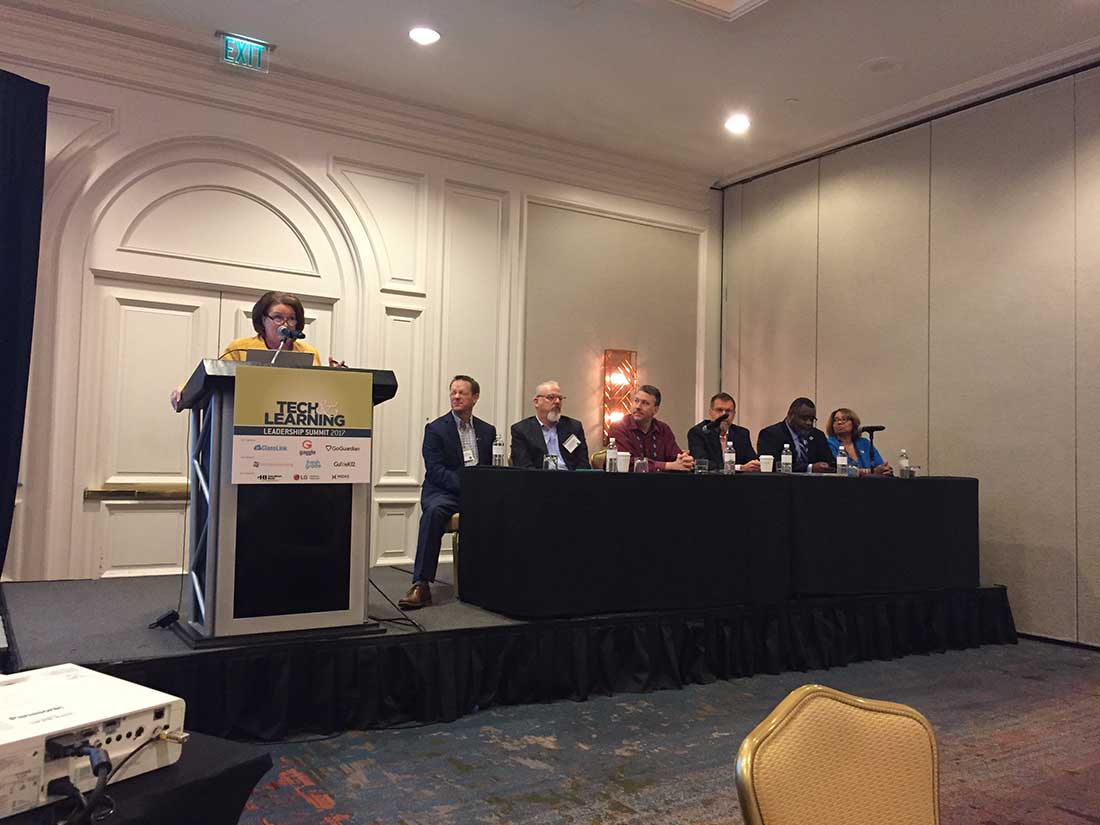
Panel members discussed the positive role high-stakes assessment has had in driving schools to adopt technology. In part because of the focus on testing, however, many schools still lag behind when it comes to integrating technology into the curriculum. Successful adoption of technology into the curriculum requires a happy marriage between curriculum and technology. There are four key components that can lead to a successful marriage: active engagement, group participation, frequent interaction and feedback, and connection to real-world experts.
The key to staying out of divorce court is remembering that it’s not about technology. It’s about learning. These are not tech programs. They are learning programs. We don’t want tech committees. We want learning committees.
This learning requires teachers to receive training and support so they know the right tech tools to use and how to use them. It’s important to think about what teacher support looks like and also to have a teacher evaluation plan that accounts for effective integration of technology into the classroom. Superintendent Hank Thiele and Technology and Information Services Director Rod Russeau of Community High School District 99 (IL) shared that they’ve changed their teacher evaluation plan to be more like a checkup. They go in once a year to see how they are. This gives time for teachers and leaders to grow.
Dwight Goodwin, director of instructional technology, and Mike Mattingly, assistant superintendent of curriculum, from Denton (TX) Independent School District reminded leaders of the importance of starting with thinking about the “why.” All stakeholders should understand clearly the reasons the school or district is integrating technology. It’s also important to survey stakeholders to see what they want. Like other districts across the country, Denton adopted Chromebooks for its 1:1 because of the feedback district leadership received. Students shared the importance of having a touchscreen, keyboard, instant on, and long battery life. Making this collaboration transparent is key for adoption.
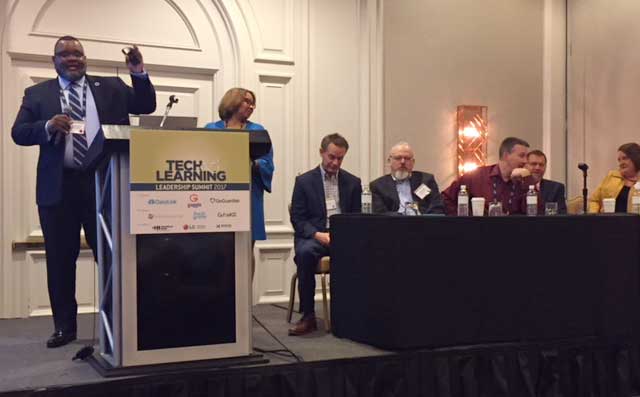
Asbury Park (NJ) School District superintendent Lamont Repollet and assistant superintendent Sancha Gray shared that their marriage of curriculum and tech didn’t start out well. When they joined the district in 2014 they inherited baggage in the form of a bad reputation in the media and therefore in the community. Repollet focused on the importance of telling a new story—a story about building a brighter future and embracing creativity and innovation. They encouraged everyone to get on Twitter and Facebook and use those platforms to change the story and show people that the district is working. As Repollet explained, “Being a digital leader is about building a positive brand for our schools and extending our audience. Social media has allowed us to reach beyond the parents of our students and engage the greater community. Now when we celebrate student success, the community celebrates student success.”
The approach has been a success. There has been a 24 percent increase in graduation rates since 2014, and 68 percent of students exceeded one-year growth targets through their hip-hop literacy intervention program. You can follow the magic on Twitter by visiting twitter.com/Asbury_ParkSD.
Digging Deeper: Keys to Making the Marriage Work
Following the panel, attendees worked in small groups to share challenges and solutions concerning the marriage of curriculum and technology. Key takeaways included the importance of beginning with the “why.” The why should be aligned to student learning and instructional goals. The district should have a unifying vision explaining the why. To do this, the technology partner in the marriage cannot be separate. Districts must create a culture in which a technology-infused curriculum is a priority. They must also stay away from technology initiatives (e.g., 1:1 iPads) and move toward learning initiatives.
To ensure success, there must be time and structures for communication. There must be a safe place where discussions can include the good, the bad, and the ugly. Ideally, methods for communication move beyond meetings and email and into online communities (e.g., Facebook, Workplace, Teams) where instant sharing, collaboration, group messaging, and video are embedded.
When making decisions, always include student voice and choice—whether those decisions involve purchasing or learning programs. For example, in Asbury Park, the literacy intervention program they implemented as part of their STEAM initiative incorporated the student’s love of hip hop. The hip-hop literacy camp contributed to students exceeding growth targets. At Denton ISD, they surveyed, observed, and recorded video interviews of students discussing preferred devices. Students knew they were a part of the decision, which helped them own and have agency in their learning.
The final key takeaway was that there must be a strategic plan to educate and support both teachers and leaders in understanding the why and implementing the vision.
Lisa Nielsen is author of The Innovative Educator blog and Director of Digital Engagement and Learning at the New York City Department of Education.
Lisa Nielsen (@InnovativeEdu) has worked as a public-school educator and administrator since 1997. She is a prolific writer best known for her award-winning blog, The Innovative Educator. Nielsen is the author of several books and her writing has been featured in media outlets such as The New York Times, The Wall Street Journal, and Tech & Learning.
Disclaimer: The information shared here is strictly that of the author and does not reflect the opinions or endorsement of her employer.
